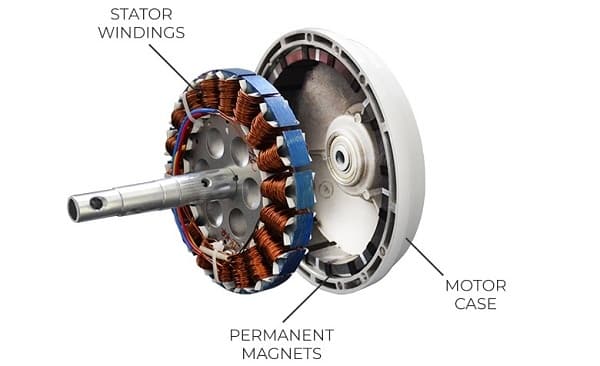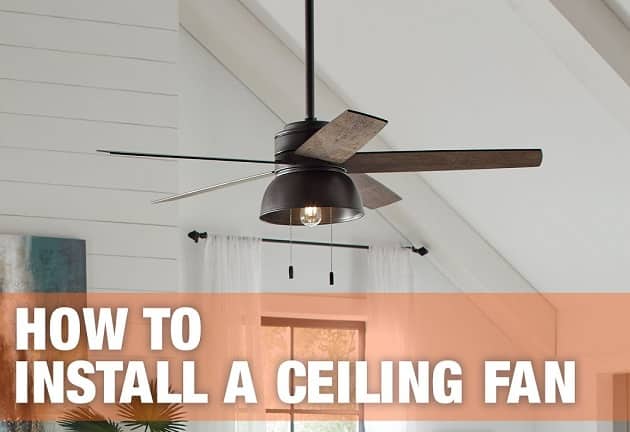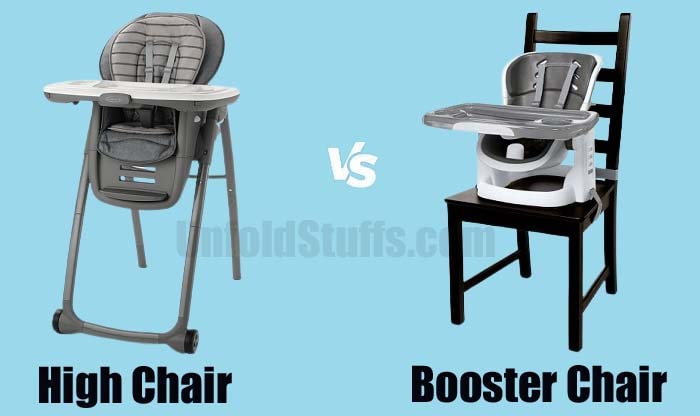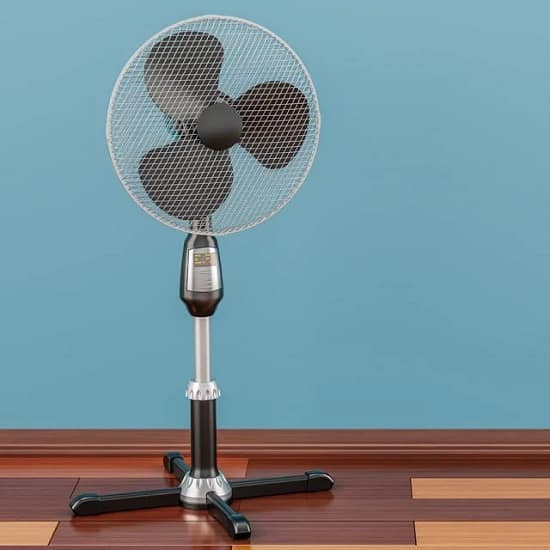Because of the availability of low-cost controllers on the market, Brushless dc motors are finding their way into an increasing variety of electrical products and devices. For example, consider the following factors.
- Because there is no commutator or brush involved, there is no damage to the mechanical parts of the system.
- Because BLDC motors utilize micro-controllers to create a particularly close for variable speed, they have greater precision over traditional motors.
- The motor is extremely efficient of the minimal friction it has.
To understand better, here are some of the advantages and disadvantages of a BLDC motor fan.

Advantages of BLDC Motor Fan
Brushless direct current motors have several advantages over regular brushed direct current motors.
Several of the benefits are addressed in greater detail below:
- The absence of carbon brushes in a brushless DC motor minimizes the frequency with which brushes must be replaced and the amount of money spent on maintenance.
- Brushless direct current motors outperform brushed direct current motors in terms of performance and efficiency. This is due to the incorporation of electronic control, which allows for fine-grained regulation over the speed and torque of the motor.
- The lifespan of a brushless DC motor is approximately six times greater than that of a conventional brushed DC motor.
- Brushes can generate a lot of sparks, which can shorten the life of a brushed DC motor or cause it to completely burn out.
- Brushless DC motors, on the other hand, have fewer risks of burning out as a result of sparking problems because there is no sparking problem.
- Brushless direct current motors are designed in tiny, compact sizes and have a high torque-to-weight ratio, making them appropriate for a wide range of robotics & medical applications including robotic arms & robotic legs, among other things.
- When compared to certain other motors with similar ratings, the operating noise produced by a brushless DC motor is significantly lower. As with another motor, there is constant contact between the brushes, resulting in noise & sparking while the brushes are nearby. As a result, brushless direct current motors are preferred in applications where electrical noise must be avoided.
- Owing to the transition from traditional mechanical commutation to a modern electronic commutation system, more control is gained while the likelihood of failure due to the previously described reasons of wear and tear decreases.
- Brushless DC motors, in contrast to other types of motors, have low no-load current, making them appropriate for operation at low or no load.
- Brushless direct current motors can deliver maximum torque constantly throughout the revolution, but brushed direct current motors can deliver maximum torque only at a certain moment in the rotation. When comparing the brushed motor and the brushless DC motor, the BLDC motor will need a considerably larger magnet to get the same torque rating. Thus, a brushless DC motor with a very small footprint and high torque rating is produced as a result of this design.
- Brushless DC motors can be equipped with a feedback control system to monitor and control their speed and torque. This results in more accurate torque and power control, as well as higher efficiency, lower power consumption, and longer battery life in the case of motors that are powered by multiple batteries simultaneously.
- Because of the existence of an electromagnet in the middle of the motor, brushed direct current motors have a heating problem and do not cool down rapidly.
- The brushless DC motor, on the other hand, does not contain a magnet in the middle, which reduces the possibility of overheating.
Brushless DC Motor Disadvantages
Similar to all of the other gadgets, brushless direct current motors have a few drawbacks when compared to other types of motors. Although brushless DC motors outperform brushed DC motors in many instances, brushless DC motors have several drawbacks, which are outlined below:
- When compared to a brushed DC motor, the price of a brushless DC motor is significantly greater, and the electronic controller adds to the entire cost of setup, whereas in a typical motor, a low-cost mechanical commutation arrangement using brushes is employed.
- When a brushless motor is used at a low speed, it produces tiny vibrations during the low-speed rotation. This is normal. Vibrations, on the other hand, are reduced at high speeds.
- In some cases, the inherent vibration frequency of a brushless DC motor can match or come to the vibration of the body as well as plastic parts, resulting in the incidence of the resonance phenomenon. This is due to the intrinsic normal vibration of the brushless DC motor. However, by adjusting the device, this recurrence can be reduced to a minimum. It is common to see resonance phenomena in many BLDC motor-based devices.
- Brushless Dc motors are simple to run due to their straightforward wiring: the positive end is linked to the positive wire, and the negative terminal is attracted to the negative wire, after which the motor begins to rotate. However, in the event of a brushless direct current motor, the wiring & functioning of the motor are more complicated due to the inclusion of electronic control or its connection to all of the electromagnets in the motor.
Why choose BLDC Fans?
Typical fans are composed of a single-phase induction motor drive, whereas BLDC fans are powered by a brushless electronic direct current motor. Copper wire, on the other hand, is used by BLDC ceiling fan manufacturers. In comparison to traditional fans, which consumed 70-80 watts of energy, modern, energy-efficient fans require only 30-35 watts, or about 60% less electricity. Because brushless direct current motors get a powerful motor to weight proportion, they are an extremely energy-efficient option.
Conclusion
In summary, brushless direct current motors have numerous advantages over regular brushed direct current motors, including lower maintenance costs and a reduced need for maintenance. They are also small in size and deliver a lot of torque while maintaining excellent speed controlling and efficiency. On the other hand, because of the use of electronic control, it has several disadvantages, including a greater cost, a resonance problem, and a complex wiring configuration.

Santosh Kumar is an editor at unfoldstuffs.com and a professional content writer. With years of experience he is passionate for creating engaging, informative and impactful topics.









